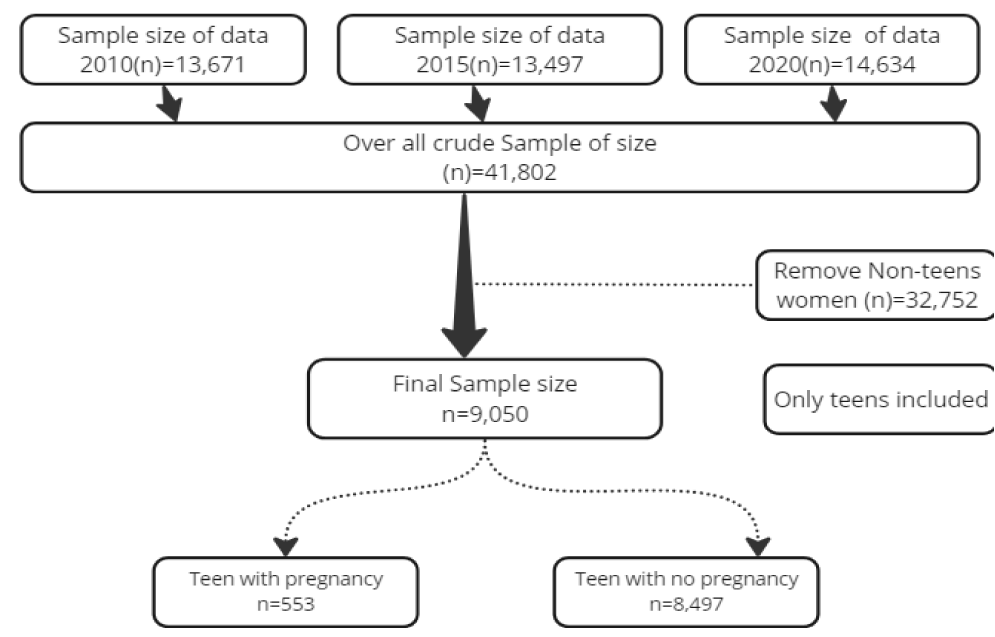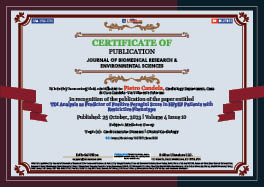Medicine Group. 2023 October 23;4(10):1470-1473. doi: 10.37871/jbres1820.
TDI Analysis as Predictor of Positive Perugini Score in HFpEF Patients with Restrictive Phenotype
Candela P1*, Corrado E2, Valerio MCE1, Camarda P1, Ajello L1, Castelluccio EV1, Mineo V1 and Rebulla E1
2UOC Cardiologia, AOUP "P. Giaccone", Università degli Studi di Palermo, Via del Vespro 129, Palermo, Italy
Abstract
Cardiac amyloidosis is an important but underdiagnosed cause of heart failure with preserved ejection fraction (HFpEF). We analysed TDI doppler with echo to determine if there is a correlation with positive results in myocardial sPECT in 86 consecutive patients presenting with HFpEF and suggestive criteria for cardiac amyloidosis [1].
Introduction
Cardiac amyloidosis is an infiltrative cardiomyopathy caused by accumulation in the heart interstitium of amyloid fibrils formed by misfolded proteins. Two types of Amyloid commonly infiltrate the heart: immunoglobulin light chain (AL) Amyloidosis and Transthyretin (ATTR) amyloidosis. Early recognition remains essential for the proper management of patients with amyloid cardiomyopathy
As can be seen from scientific literature and clinical practice, cardiac amyloidosis is an important cause of heart failure (even of advanced heart failure) but it is still widely underdiagnosed for several reasons such as the heterogeneity of the cardiac phenotype, the false belief that myocardial biopsy is always necessary to make a diagnosis, the attribution of symptoms to other diseases and the absence - until a few years ago - of specific therapies for amyloidosis.
We analysed, in 86 consecutive patients presenting with HFpEF, TDI doppler with echo to determine if there is a correlation with positive results in myocardial sPECT. The aim of our study is describing if a simple and reproducible echocardiografic tool as TDI can be used to increase the diagnostic possibility of cardiac amyloidosis.
Materials and Methods
The study was conducted on a cohort of patients with heart failure with preserved ejection fraction (HFpEF), i.e. with an ejection fraction greater than 50%. The inclusion criterion of the selected patients was the presence of a restrictive cardiac phenotype; these patients showed varying degrees of ventricular hypertrophy on the echocardiogram and indirect indicators of increased filling pressures. Among 250 patients hospitalized for HFpEF heart failure, we selected 86 patients (34%) with this restrictive phenotype (diastolic disfunction with indirect measure of elevated fillin pressures). The average age of the population examined was 79 years with a distribution by age class as shown following figure 1.
The anamnestic evaluation carried out mainly took into account the presence of:
- History of severe aortic stenosis treated surgically.
- Carpal tunnel syndrome.
- Patients had blood samples taken both on admission and on discharge. The laboratory parameters we observed were:
- NT-proBNP
- Troponin I
The first-level instrumental examination to which the patients underwent during hospitalization was transthoracic echocardiography with which a standard two-dimensional and M-mode cardiac evaluation was made, and the study of transvalvular flows using the Doppler. The main elements observed were:
- Diastolic function through diastolic function indices such as the peak rapid (E wave) and late (A wave) ventricular filling peak velocity, the ratio between these two values (E/A), the mitral annular protodiastolic velocity on Doppler (E'm) and the ratio E/e'm.
- The Global Longitudinal Strain (GLS), expression of myocardial contractility.
- Pressures in the left atrium.
- Stroke volume or stroke volume, calculated from the difference between the end-diastolic volume and the end-systolic volume.
- The indexed left ventricular mass (ventricular mass (g)/BSA (m2)).
- Upon discharge, they were instructed to perform bone scintigraphy with diphosphonates with lesion indicator in external structures. Scintigraphies were performed with the tracer 99 mTc-diphosphonates, 550MBq, class II.
- The identification of the degree of amyloid infiltration of the myocardium was carried out through the use of the Perugini score in which:
- Grade 0 represents no cardiac uptake.
- Grade 1 indicates the presence of less cardiac uptake than bone uptake.
- Grade 2 represents greater cardiac uptake than bone with bone still visible.
- Grade 3 indicates cardiac uptake greater than bone.
The sample was pooled and analyzed with a regression test and a chi-square test to obtain a correlation between mean E/E’ values and SPETC positivity. The sample distribution is shown in the table 1.
| Table 1: Age, sex and NYHA class at discharge. | |
| Sample Totale Number | 86 |
| Male (%) | 33 (38,4%) |
| Female (%) | 53 (61,6%) |
| Age | 78,7±8 |
| Male age | 77,7±7,4 |
| Female Age | 79,3±8,4 |
| NYHA Class on Discharge | |
| NYHA I | 4 (4,7%) |
| NYHA II | 44 (51,1%) |
| NYHA III | 38 (44,2%) |
| NYHA IV | 0 (0%) |
Results
We analyzed several data point in our static analysis; in particular, however, we focused on the relationship of E/e'm or the ratio between two echocardiographic values: the E wave (the peak rapid ventricular filling velocity) and e'm (the mitral annular protodiastolic velocity on Doppler). The mean value of E/e'm measured was 20.5 ± 6.3. A strong correlation was found between this echocardiographic value and the positivity of the lesion marker scintigraphy (R = 0.33; p = 0.09). We have therefore calculated, through the relationship between sensitivity and specificity, the value for which it is appropriate to consider this correlation (Table 2).
Table 2: Correlation between E/e ratio and sensibility and specificity for scintigraphy positivity. |
|||||
| VALUE | SENSIB | 95% CI | SPECIF | 95% CI | Likelihood Ratio |
| > 13.88 | 92,31 | 66,69% to 99,61% | 53,85 | 29,14% to 76,79% | 2,000 |
| > 14.98 | 92,31 | 66,69% to 99,61% | 61,54 | 35,52% to 82,29% | 2,400 |
| > 16.50 | 84,62 | 57,77% to 97,27% | 61,54 | 35,52% to 82,29% | 2,200 |
| > 17.25 | 84,62 | 57,77% to 97,27% | 69,23 | 42,37% to 87,32% | 2,750 |
| > 17.75 | 76,92 | 49,74% to 91,82% | 69,23 | 42,37% to 87,32% | 2,500 |
| > 18.90 | 61,54 | 35,52% to 82,29% | 69,23 | 42,37% to 87,32% | 2,000 |
| > 19.90 | 61,54 | 35,52% to 82,29% | 76,92 | 49,74% to 91,82% | 2,667 |
| > 20.50 | 46,15 | 23,21% to 70,86% | 76,92 | 49,74% to 91,82% | 2,000 |
| > 21.15 | 38,46 | 17,71% to 64,48% | 76,92 | 49,74% to 91,82% | 1,667 |
As seen in the table above, we found a strong statistically significant correlation (p = 0.09) between E/e'm values greater than 17.25 and the positivity of scintigraphy with diphosphonates with lesion indicator (Perugini score 1-3). There were no statistically significant correlations between the same scintigraphy and gender, carpal tunnel syndrome, ventricular mass indexed for Body Surface Area (BSA), and stroke volume.
Discussion and Study Limitations
Despite originating from different precursor proteins, the basic mechanisms underlying amyloid pathogenesis is similar in that the capability of a protein to become amyloidogenic lies in its ability to acquire >1 conformation. Amyloid formation occurs when a protein loses (or fails to acquire) its physiological, functional fold. A number of factors may trigger protein misfolding and aggregation, such as abnormal proteolysis, point mutations, and posttranslational modifications such as phosphorylation, oxidation, and glycation. The misfolded protein or peptide then assembles with similar proteins or peptides to form oligomers, which circulate in the blood and deposit as highly ordered fibrils in the interstitial space of target organs. In CA, the mechanisms of organ dysfunction are likely multifactorial, resulting from a combination of factors including extracellular deposition of amyloid in the parenchymal tissue leading to mechanical disruption of tissue structure, as well as proteotoxicity of the fibrils or prefibrillar proteins leading to inflammation, reactive oxygen species generation, apoptosis, and autophagy, which can be observed even before fibril deposition [2]. This leads to a restrictive physiology, diastolic dysfunction, and eventually manifests clinically as heart failure. For this reason, we designed our study specifically to detect one of the most sensitive echocardiografic index of restrictive evolution (TDI Doppler). The result, even thou limited by the small size of the study sample, are very encouraging. Further data are needed to confirm the results but, seen the pathogenesis of cardiac amyloidosis, we think that they can confirm our results.
Conclusion
Cardiac amyloidosis is an important but underdiagnosed cause of heart failure with preserved ejection fraction (HFpEF). We analysed TDI doppler with echo to determine if there is a correlation with positive results in myocardial sPECT in 86 consecutive patients presenting with HFpEF and suggestive criteria for cardiac amyloidosis
From the data analyzed in this study, a strong correlation emerged between the echocardiographic parameter E/e'm and the presence of cardiac amyloidosis. For values greater than 17.25, the E/e'm ratio is correlated with this pathology with a sensitivity (ability to correctly identify subjects with cardiac amyloidosis) of 85% and a specificity (ability to correctly identify healthy subjects) by 69%.
Since transthoracic echocardiography is a non-invasive first-level examination and easily accessible to the entire population, we believe that this parameter can easily be used in clinical practice to raise the suspicion of cardiac amyloidosis in specific subsets of patients presenting with heart failure, leading to further examinations.
References
- Papingiotis G, Basmpana L, Farmakis D. Cardiac amyloidosis: Epidemiology, diagnosis and therapy. ESC Online Journal. 2021;19:19-21.
- Griffin JM, Rosenblum H, Maurer MS. Pathophysiology and Therapeutic Approaches to Cardiac Amyloidosis. Circ Res. 2021 May 14;128(10):1554-1575. doi: 10.1161/CIRCRESAHA.121.318187. Epub 2021 May 13. PMID: 33983835; PMCID: PMC8561842.
Content Alerts
SignUp to our
Content alerts.
 This work is licensed under a Creative Commons Attribution 4.0 International License.
This work is licensed under a Creative Commons Attribution 4.0 International License.









